Art Collectors
What I Buy and Why: Fabien Fryns on the Works Above His Many Sofas, and the Basquiat He Got for a Steal
The Belgian-born art dealer tells us about amassing a collection of young, emerging talents.
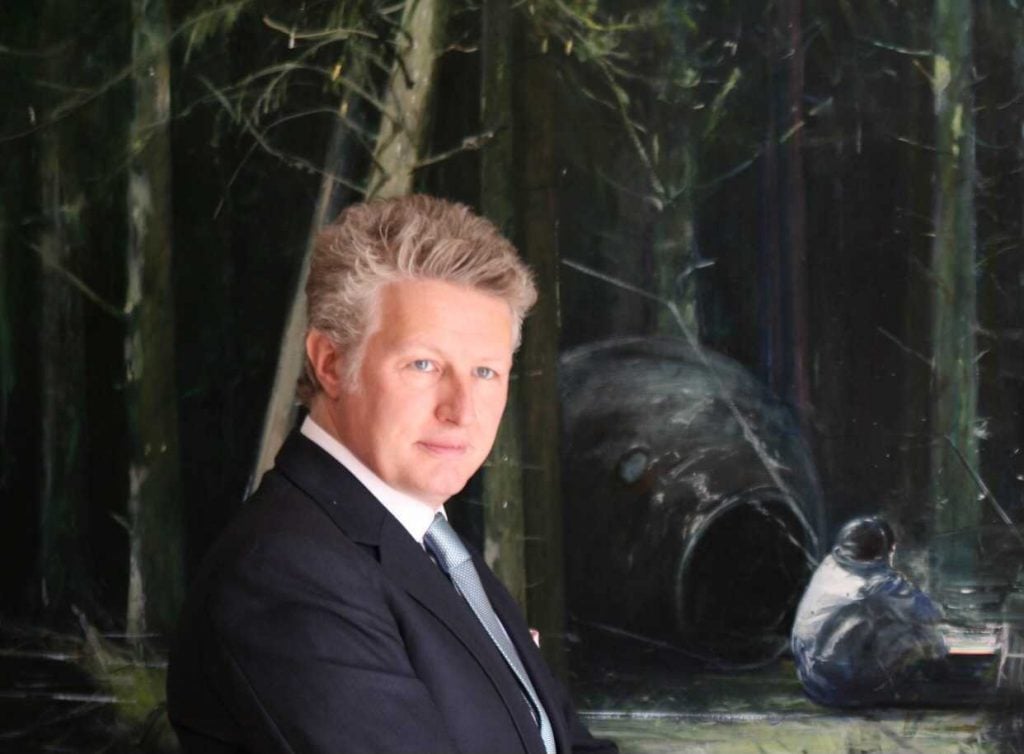
The Belgian-born art dealer tells us about amassing a collection of young, emerging talents.

Artnet News

The Belgian-born art collector and adviser Fabien Fryns fell in love with art at a young age. He first got hooked through his cousin, the art dealer Xavier Hufkens, and soon began collecting work himself.
At the tender age of 17, Fryns managed to scrape together enough money to secure a work on paper by Jean-Michel Basquiat, who was then a relatively unknown artist outside New York City. When the artist died just six months later, it’s fair to say Fryns’s first piece became a bona fide investment.
After studying art history at Christie’s in London, Fryns graduated from the European Business School and promptly set up his first art gallery, F2 Gallery, in Marbella, Spain, and in short order linked up with UBS Private Banking to open Fabien Fryns Fine Art before turning his sights to Asia.
He soon opened an outpost of F2 in Caochangdi in Beijing, founding one of the first galleries to show contemporary Western art in Asia, and establishing close relationships with artists such as Zeng Fanzhi, now one of the hottest contemporary painters working. Fryns shuttered his gallery outposts in 2012 to focus on cultivating relationships between collectors and artists in Europe and Asia.
His commitment to buying work by living artists, often straight out of the studio, has helped cement his reputation as a person who supports artists long before their names headline evening sales or art fair booths.
Fryns gave us a sneak peek at some of the most exciting artists he’s collecting.
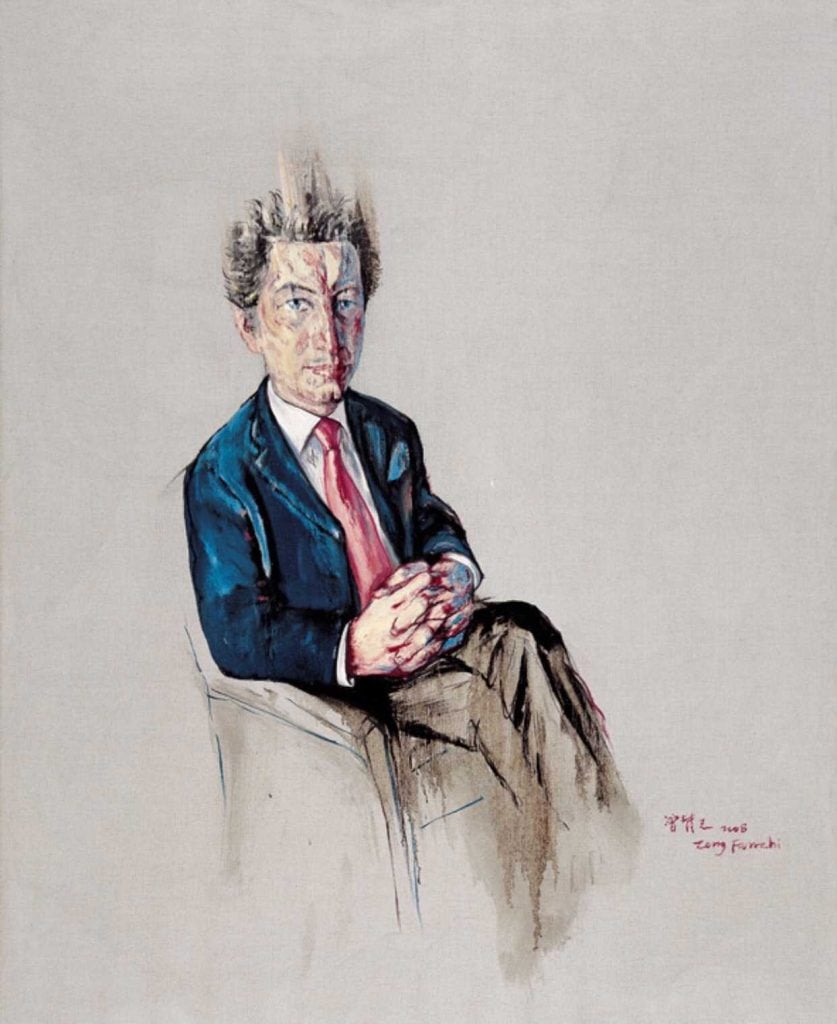
Zeng Fanzhi, Untitled (2008). Courtesy of Fabien Fryns.
What was your first purchase (and how much did you pay for it)?
A medium-sized work on paper by Jean-Michel Basquiat at FIAC in 1987 from Ropac, upon the advice of fellow Belgian Xavier Hufkens. I was 17 years old at the time and put all my savings to meet the $3,000 price tag, excluding frame.
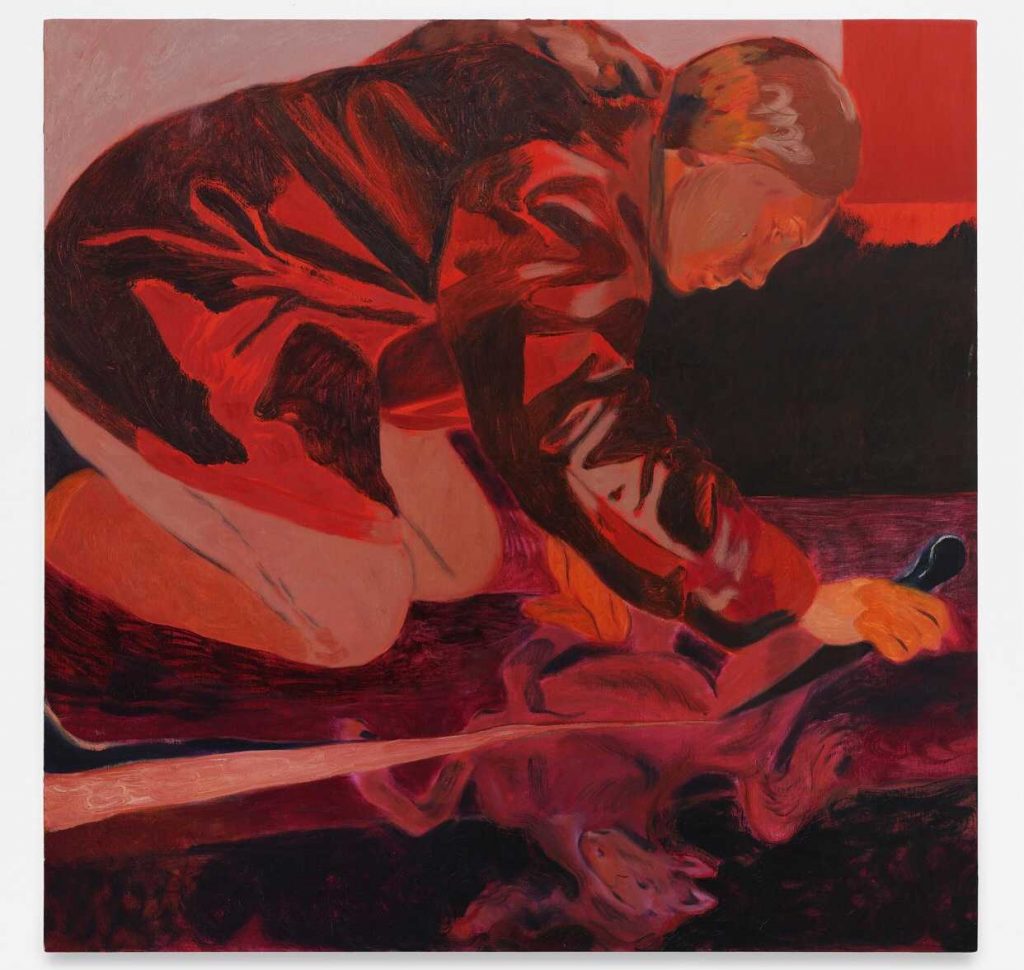
Anthony Cudahy, Cutting terror (2021). Courtesy of Fabien Fryns.
What was your most recent purchase?
I have been quite active this year and added works by Anthony Cudahy, Raoul de Keyser, Yukimasa Ida, Marcella Barcelo, Jordy Kerwick, Flora Yukhnovich, Rebecca Warren, Roby Dwi Antono, Ryan Mosley, and Los Bravu, to name but a few. For a client, we just commissioned an important monumental marble work by Adam Parker Smith, which I am very excited about.
Which works or artists are you hoping to add to your collection this year?
I like to collect in depth whenever possible, so more works by the above. And I am also always on the look out for sculpture. Another nice Zhang Xiaogang would also make sense, as he is not in fashion at the moment and is a truly important artist.
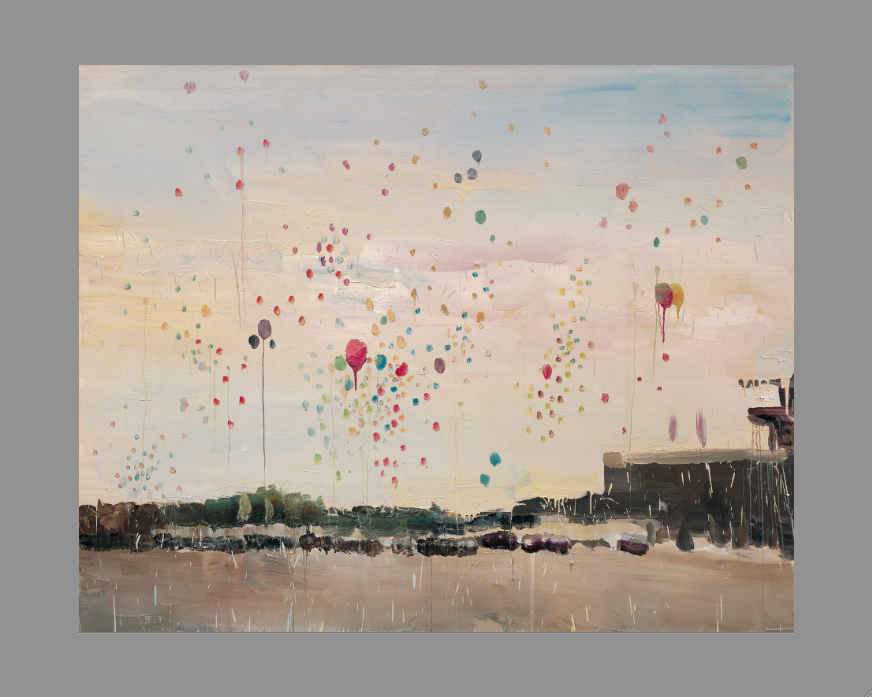
Qiu Xiaofei, Tiananmen (2007). Courtesy of Fabien Fryns.
What is the most expensive work of art that you own?
The most expensive work is not necessarily the work I most like. As a matter of fact, once a work surpasses a certain price range, I feel it’s out of place in my collection and I sell it to purchase more works by younger artists.
That’s perhaps not the most sensible decision from a business point of view, but this way I keep the collection dynamic and young. Having said this, a mask painting by my friend Zeng Fanzhi is a nice thing to enjoy.
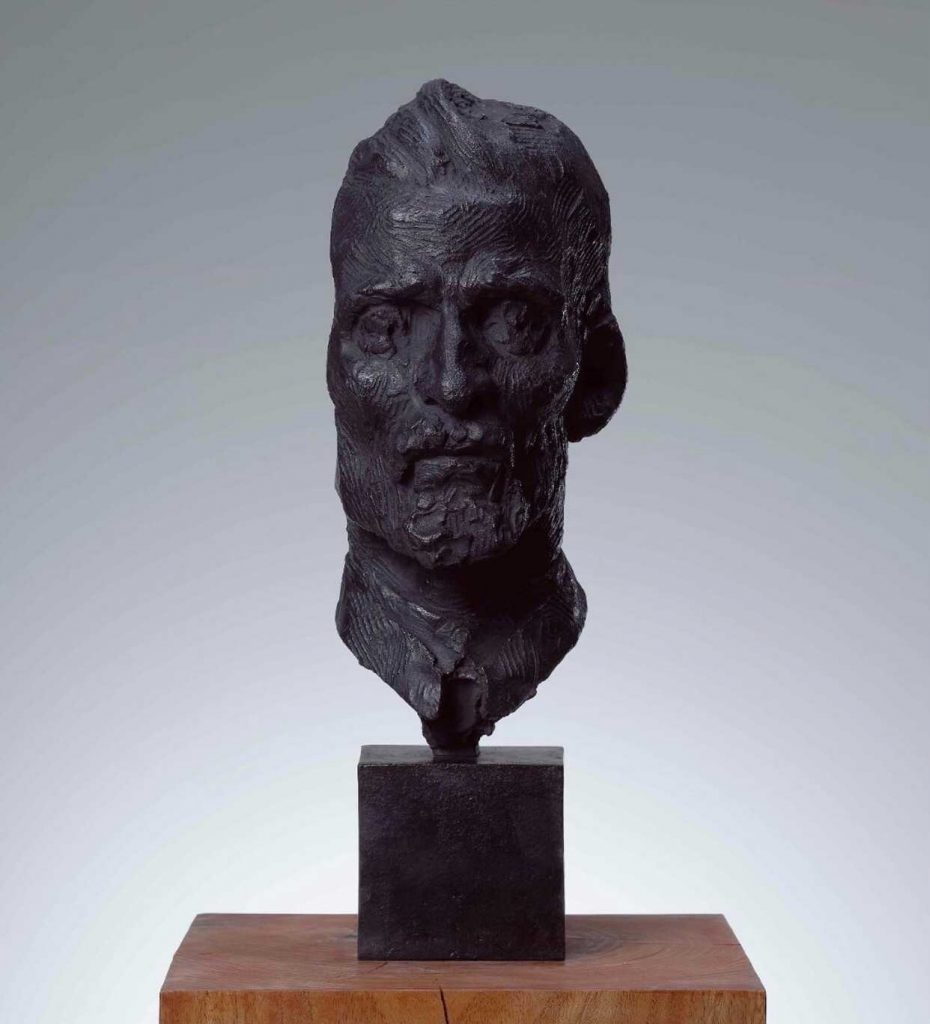
Yukimasa Ida, Van Gogh´s Portrait in the Mirror (2021). Courtesy of Fabien Fryns.
Where do you buy art most frequently?
I used to buy a lot from artist studios before the pandemic, but also from galleries and private dealers. Instagram has become an important tool for discovering new artists. I rarely buy from auction as I am most excited about discovering young artists, and once they come to auction they are already quite established.
Is there a work you regret purchasing?
Absolutely not. What I do regret is that quite a few works end up in storage due to the lack of space.
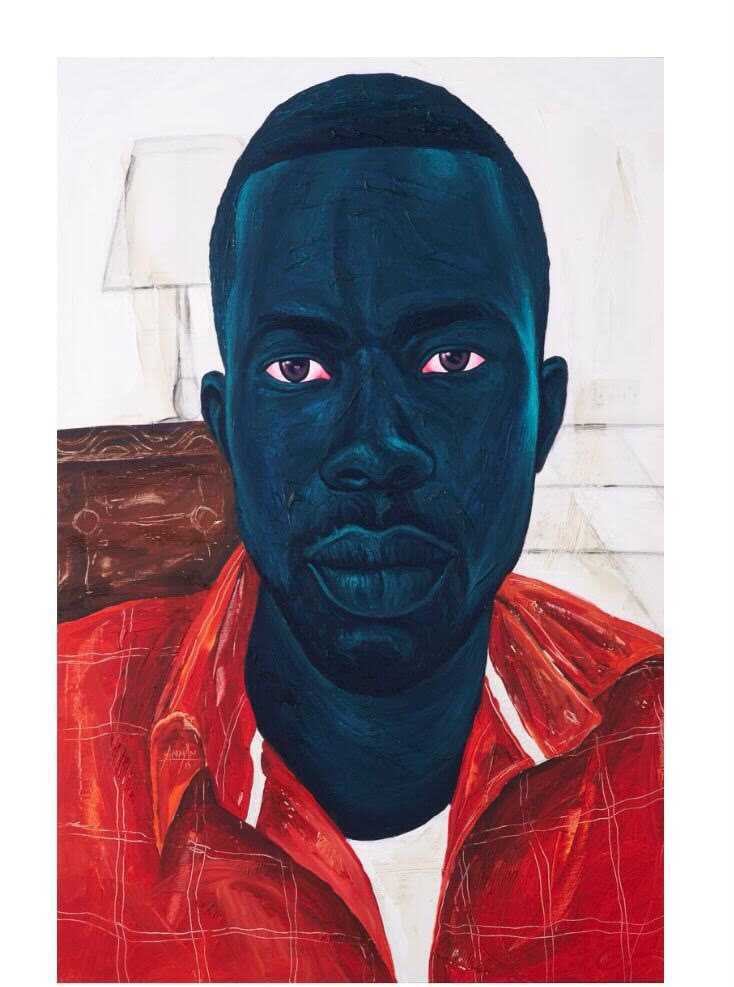
Francis Annan Affotey, Doku (2021). Courtesy of Fabien Fryns.
What work do you have hanging above your sofa? What about in your bathroom?
It depends which sofa you are talking about. All sofas combined, Chen Ke, Qiu Xiaofei, Peter Halley, and Henry Hudson. In the bathroom—that sounds a little pejorative so I won’t name names—but quite a few works on paper by close artist friends of mine.
What is the most impractical work of art you own?
Probably a 2,000 kg-solid-iron sculpture by Zhang Huan.
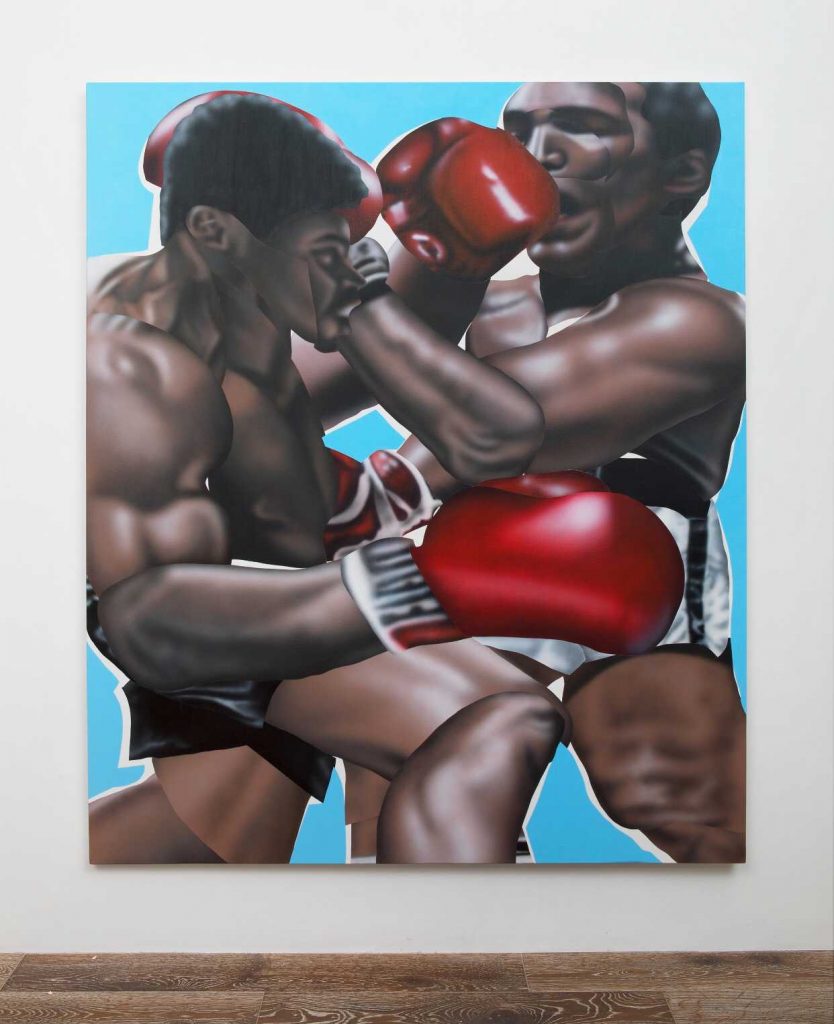
Alic Brock, Messenger (2021). Courtesy of Fabien Fryns.
What work do you wish you had bought when you had the chance?
The two works which I declined upon for the same reason—because they were monumental paintings and I had no way of getting them through the door: one by Yan Pei Ming and one by Claire Tabouret. But I purchased other works by both artists, so it all worked out in the end.
As I like to live as much as possible with the art I collect, size is an issue. I have no problems buying small size works, as long as they are of high quality and very representative of the artist´s oeuvre.
If you could steal one work of art without getting caught, what would it be?
The Thomas Crown in me is always on the lookout for the next important artist, hence such a work is maybe being produced as we speak, or in the near future.